Water clarity
Back to: Monitoring & Maintenance
Although not as important as monitoring the biomass and quality of your kelp, collecting some environmental data on a routine basis can help paint a more detailed portrait of your farm over time.
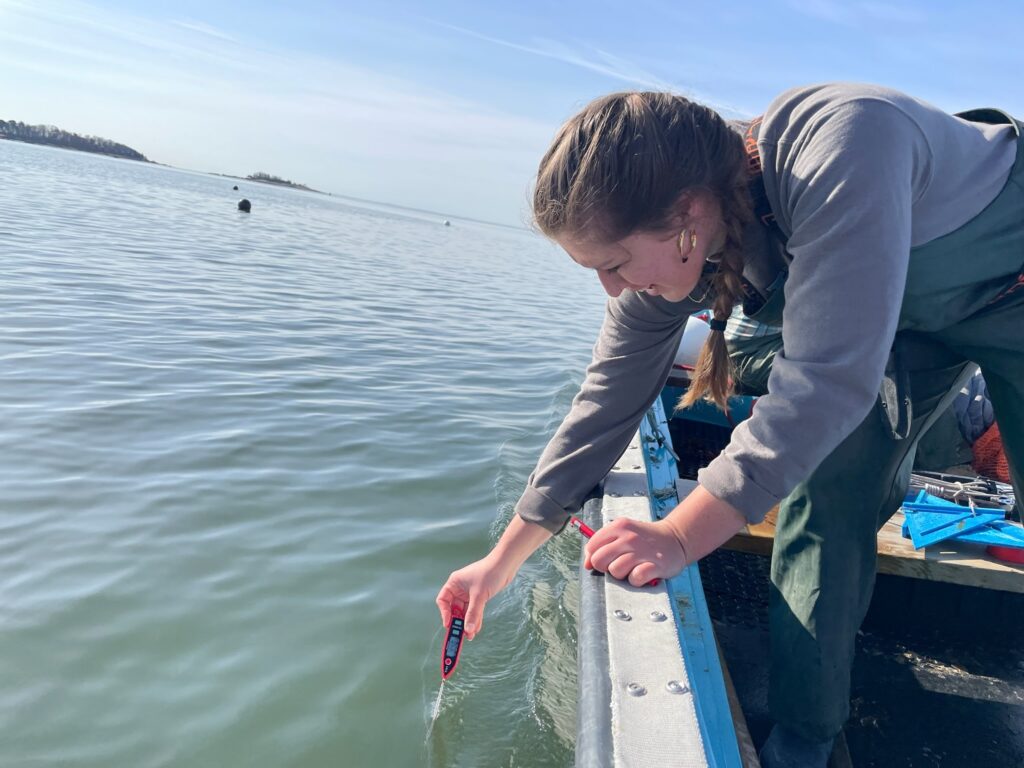
-
-
Salinity
-
Water temperature
-
Nutrient levels
Water Clarity
Water clarity can be measured with a low-tech Secchi disk – a black and white disk with a string attached. Lower the disk into the water and record the length of the string when the color pattern is no longer visible to the naked eye. This gives you a reading for the depth of water clarity at your site. Water clarity impacts the depth at which you keep your lines to optimize access to light. Keep in mind that water clarity may change during different times of year and after storm events and runoff.
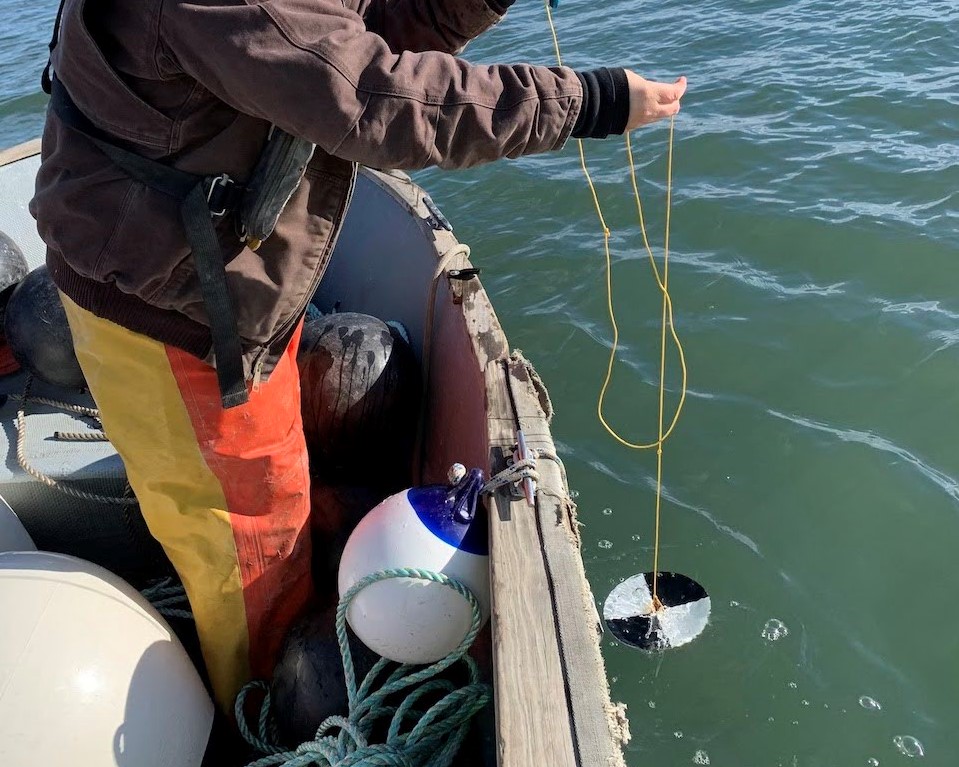
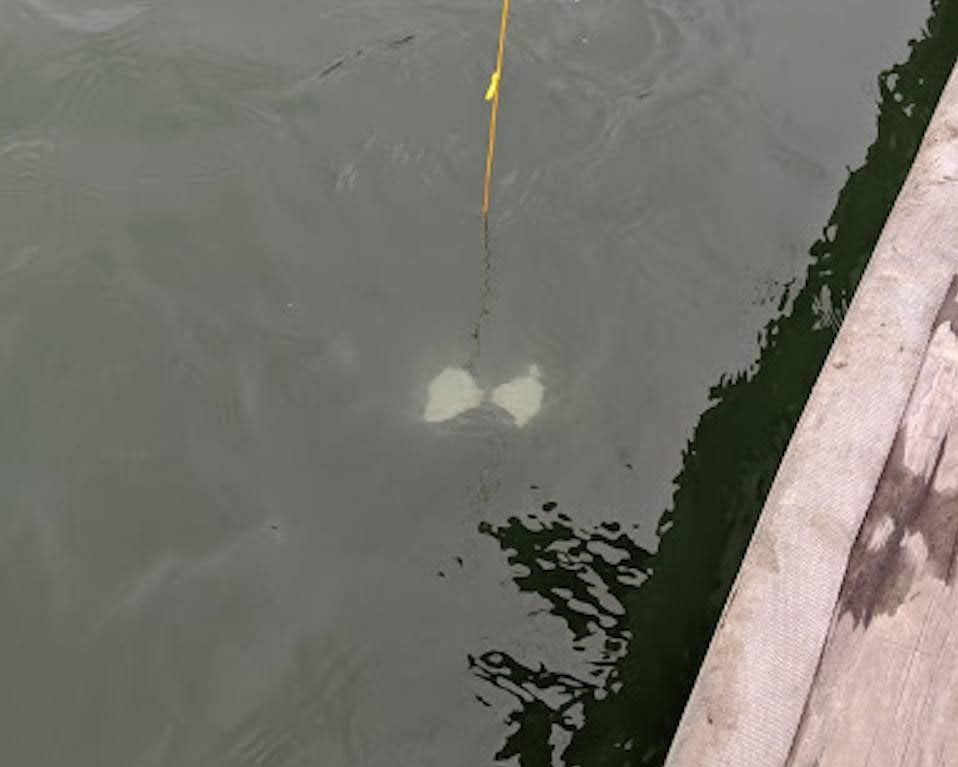
A Secchi disk is an inexpensive, low-tech way to measure water clarity
Salinity
Salinity can be measured with an inexpensive salinity refractometer, commonly used at commercial aquariums, and available online. You can easily read the salinity of the water by putting a few drops onto a slide and holding it up to the light. The reading will display the salinity in parts per thousand. One reason to check salinity, especially after heavy rainfall or periods of intense snowmelt, is that freshwater can cause a blistering effect on your crop that might make your kelp less viable as a food product.
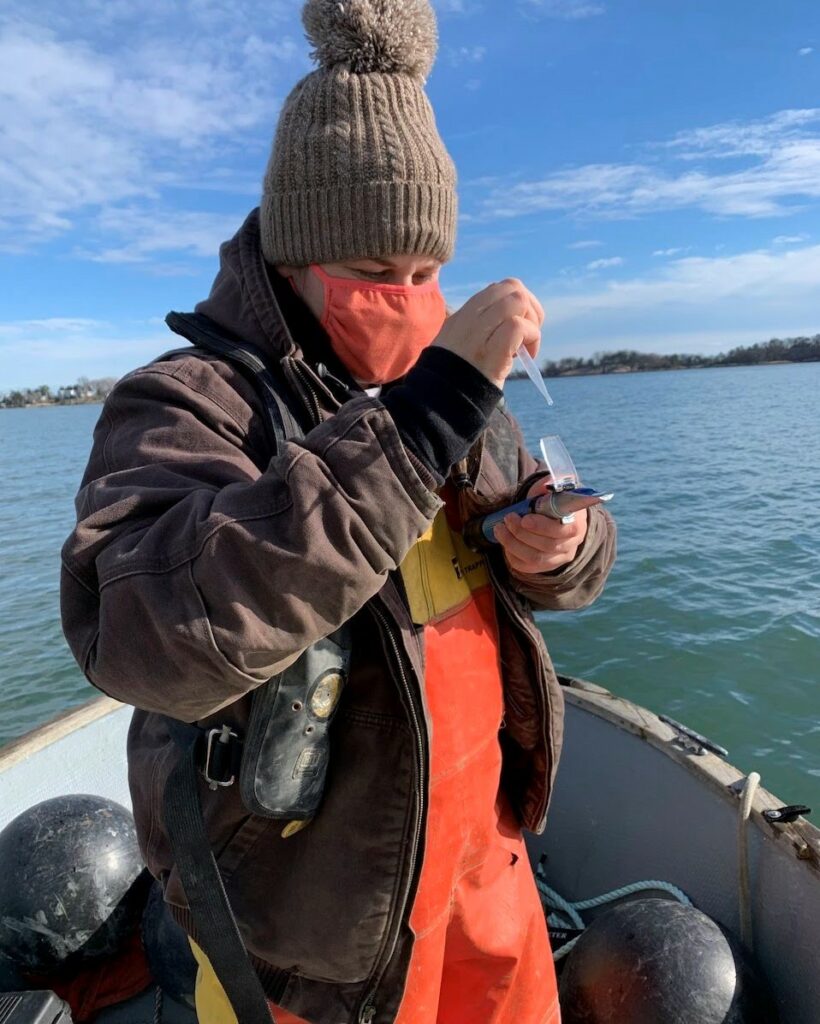
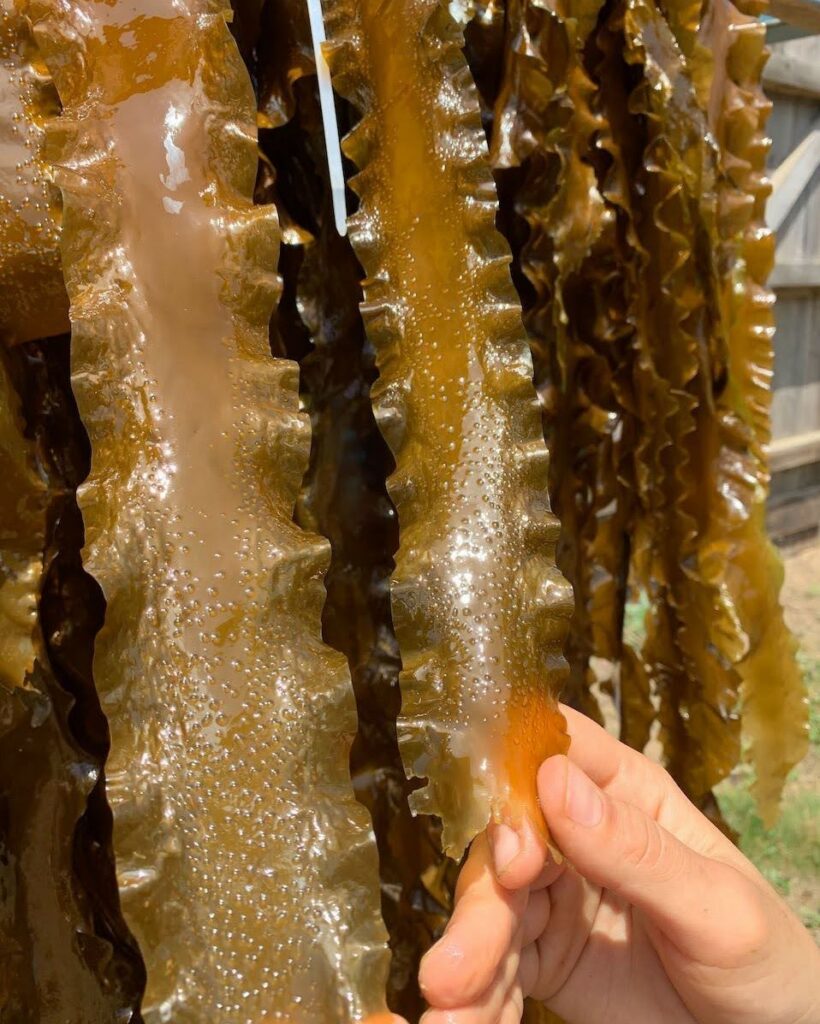
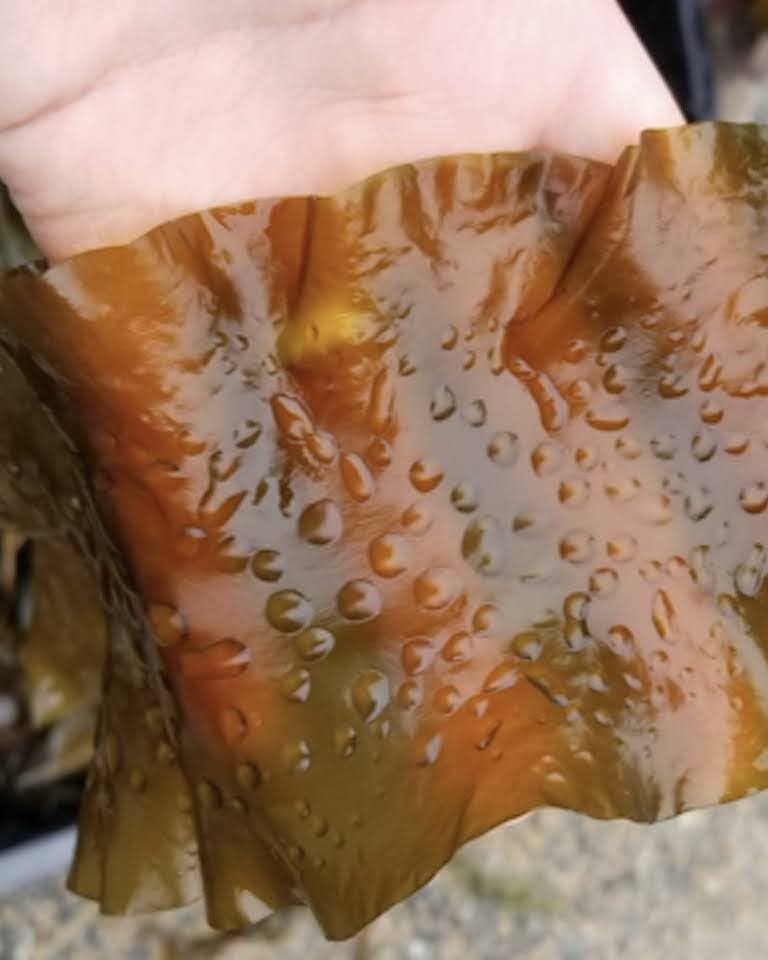
Temperature
Water temperature can be measured with a marine-grade thermometer or with the chart plotter on a boat.
Nutrient Levels
One strong indication of the health of your kelp is its color. Nutrient-rich kelp is dark brown in color, ranging from amber to chocolate in color. Nutrient-starved kelp tends to be very light in kelp – almost translucent and yellow.
If your kelp has a dark color to it, then your site likely has enough nutrients to support the growth on your farm. If your kelp is paler in color, it may be worth checking the nutrient profile of the waters at your farm site. You can do this by purchasing a kit to measure the nitrate in the water, or by sending in a water sample to a lab. If the water on your farm site scores below 5uM of Nitrate, there may be a concern that your site is too nutrient-limited to support significant growth. Bear in mind that the nutrient profiles of different sites can change from year to year.
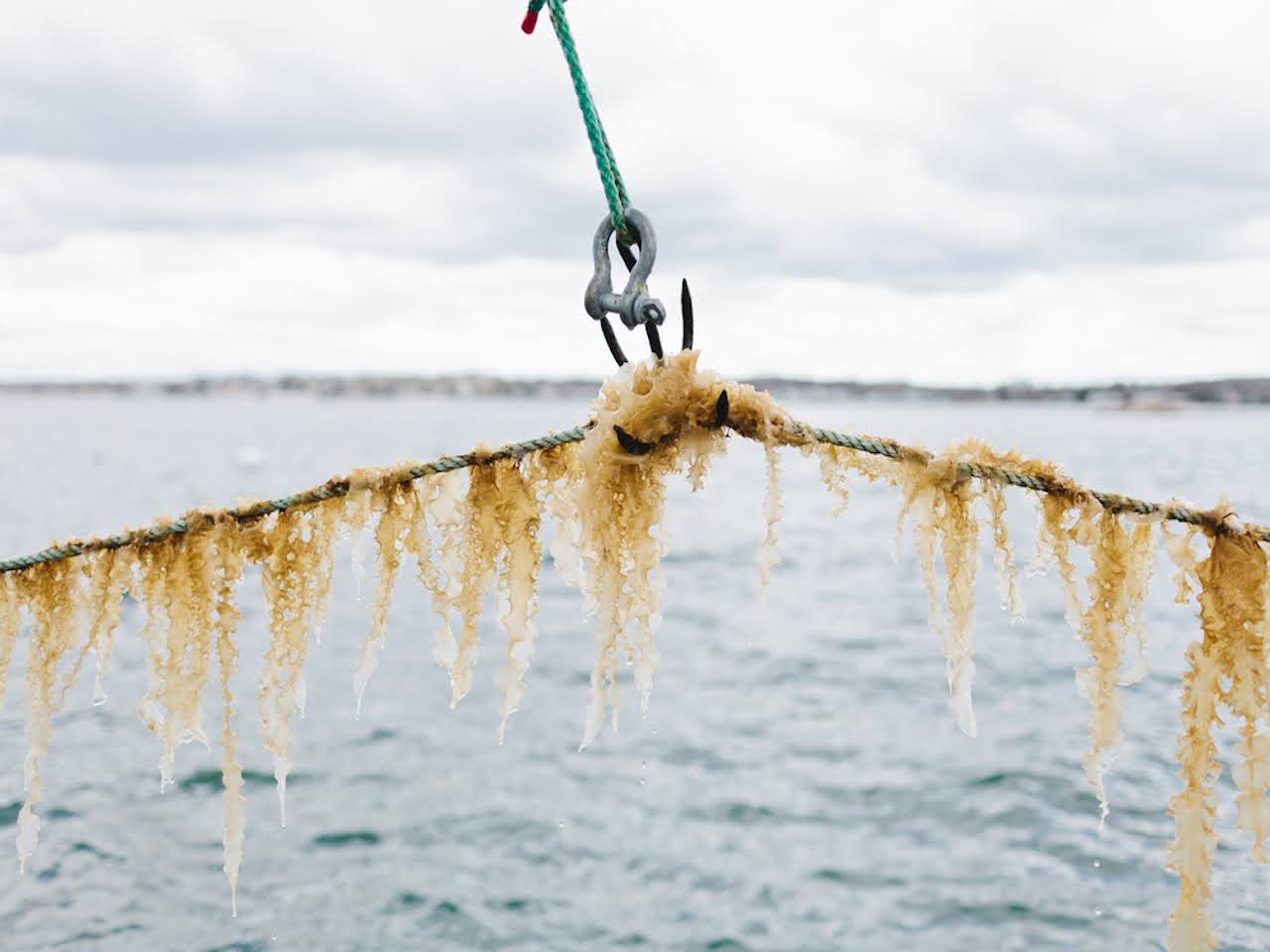
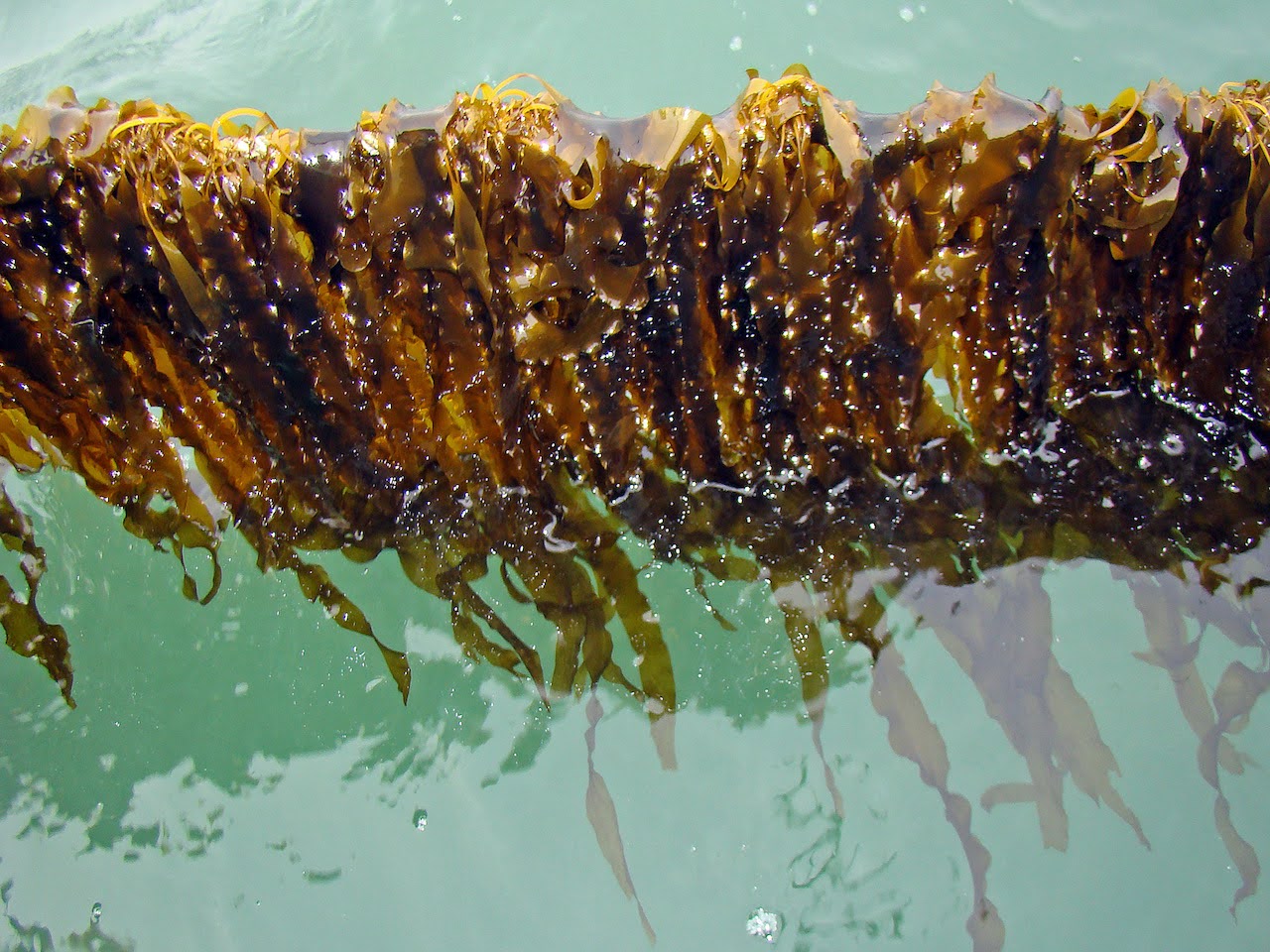
Learn More
Dr. Schery Umanzor at the University of Alaska is developing a nutrient extraction kit for kelp farmers that measures how many nutrients are absorbed from the water into the tissue of the kelp. The tool could soon be used for site evaluation to identify locations that are nutrient-rich and nutrient-limited. Learn more here.
And some scientific papers on nutrient suitability for kelp:
Kerrison et. al., (2014) “The Cultivation of European kelp for bioenergy: site and species selection”
READBroch et al., (2012) “Modelling seasonal growth and composition of the kelp Saccharina latissima”
READBroch et al., (2013). Modeling the cultivation and bioremediation potential of the kelp Saccharina latissima in close proximity to an exposed salmon farm in Norway.
READWhen collecting data, there’s a lot to keep track of. We recommend keeping a farm log of your monitoring and maintenance activities throughout the growing season. Not only can you use some of the variables you record to predict yields, but you might start to see patterns from year to year allowing you to tweak and optimize elements of your farm operations.